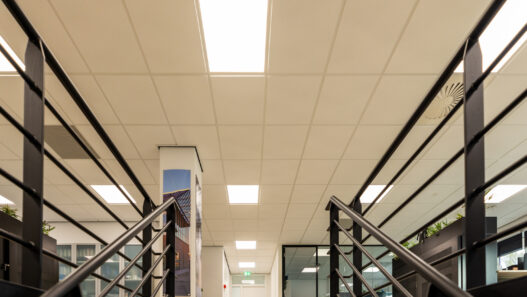Technical asset management plays a critical role in the successful management of office buildings, particularly when dealing with vacant properties. It encompasses a wide range of activities that focus on maintaining operational efficiency, safety, and sustainability. This article will cover key steps and strategies for effectively managing the technical aspects of an office building, ensuring that targeted investments lead to significant value creation.
Due Diligence: A Critical First Step
Before acquiring an office building, a thorough due diligence process is essential. This involves a detailed assessment of the building’s current condition to identify any structural or technical issues. The inspection should cover the foundation, walls, floors, and roof to ensure the building’s integrity. A key part of the due diligence process is reviewing the technical systems, such as HVAC (heating, ventilation, and air conditioning), electrical systems, plumbing, and elevators. Additionally, understanding the building’s energy performance is crucial. If the property has a poor energy rating, there are opportunities for significant improvements, which can enhance both the building’s sustainability and appeal to future tenants.
Engaging Suppliers and Contractors
Once the building is acquired, it’s time to invite suppliers and contractors to inspect the property. By obtaining quotes for the necessary repairs and upgrades, owners can plan their renovation budget more effectively. This step is essential to avoid unexpected costs later in the process and to ensure that renovations stay on track financially.
Demolition and Clearing the Space
vacant building often contains outdated or non-functional elements that no longer serve a purpose. The first phase of adding value to the property involves stripping away these elements, creating a clean slate for redevelopment. This demolition process should be carefully documented with photos and videos, as this material will be useful for future marketing campaigns and to demonstrate the progress of the project to stakeholders.
Rebuilding the Core Structure
The reconstruction of the building’s core structure is a critical phase in technical asset management. This includes ensuring that the building’s skeleton is robust and ready for the next stages of development. Without a solid foundation, further improvements can be compromised, so it’s important to invest in the building’s fundamental infrastructure before moving on to finishing touches.
Improving Energy Efficiency and Sustainability
Upgrading the building’s energy efficiency is not just a way to reduce operating costs but also to attract eco-conscious tenants. Implementing sustainable practices can also lead to certifications like BREEAM, which can significantly increase the property’s market value. Insulating the roof, installing energy-efficient lighting, and incorporating modern HVAC systems such as heat pumps are excellent ways to improve the building’s energy performance. These upgrades not only enhance sustainability but also help in marketing the building as a high-quality, future-proof office space.
R.B
“Effective technical asset management transforms vacant office buildings into high-performing investments through strategic upgrades, energy efficiency, and proactive maintenance.”
Installing and Optimizing Technical Systems
A modern office building needs state-of-the-art technical systems to meet tenant expectations. This includes updating restrooms, ensuring reliable water supply, optimizing boiler systems, and installing advanced control systems to manage energy use effectively. These systems should be designed with both efficiency and durability in mind, ensuring long-term value for the building.
Overseeing Construction and Materials Procurement
Throughout the renovation process, it’s vital to stay closely involved in managing the project. Purchasing materials directly can help control costs and ensure the quality of the products used in the building. Constant oversight of contractors and suppliers is essential to ensure that they adhere to the project’s specifications and timeline.
Creating a Showroom
One effective strategy in leasing a renovated office space is to set up a fully furnished showroom. This allows potential tenants to visualize their future workspace, which can accelerate the leasing process. A well-designed showroom can make a significant difference in helping potential tenants see the value and potential of the building.
Finishing Individual Units
As the renovation progresses, it’s important to document each step of the process with professional photos and videos. This content can be used for marketing purposes and to report on progress to stakeholders. Once individual office units are completed, they should be handed over in pristine condition, ready for immediate use by tenants.
Ongoing Technical Management
Once the building is fully renovated and occupied, technical management doesn’t stop. Maintaining the building’s operational efficiency through regular preventative maintenance is key to preserving its value. Addressing tenant complaints and technical issues promptly is also essential to keeping tenants satisfied and ensuring the building remains fully leased.
Technical asset management is a structured process that, when executed effectively, adds significant value to office buildings, particularly vacant or underperforming ones. From initial due diligence to the final stages of preventative maintenance, each step is critical in ensuring that the building operates efficiently, meets modern sustainability standards, and attracts tenants. By focusing on quality, sustainability, and proactive management, owners can turn vacant properties into profitable investments, securing long-term success in the competitive commercial real estate market.
